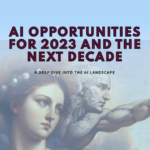8 Emerging Technologies That Will Reshape Education in 2023
Education is an ever-evolving field, and new technologies are constantly being developed to improve the learning experience and make it easier to access education. In the past few years, we have seen some significant advances in educational technology, from online learning platforms to virtual reality and augmented reality tools. These technologies have already made an impact and will continue to shape how we learn and teach in the future. In this blog post, we will explore 8 emerging technologies that are set to revolutionize education by 2023.
1. Augmented Reality
As the name suggests, augmented reality (AR) is the process of enhancing one’s physical environment with digital images and sound. AR technology has been available since the early 2010s, but it has been gaining popularity recently, as more companies develop AR apps. In education, augmented reality is used to create immersive experiences that give students a deeper understanding of topics. For example, an AR app could be used to teach anatomy by allowing students to “see” the skeletal structure of the human body as they explore a virtual world. With more development, we can expect to see more educational apps that use augmented reality to improve learning.
2. Virtual Reality
Virtual reality (VR) is a technology that creates a simulated environment that users can interact with. It’s different from augmented reality since the user enters into a completely digital world rather than enhancing their existing environment. VR has been used in education since the late 2000s, but the technology has improved in recent years. For example, there are now more affordable VR headsets that make it easier to access virtual worlds. As technology becomes more advanced, we can expect to see a broader range of educational applications for VR.
3. Artificial Intelligence
Artificial intelligence (AI) is the branch of computer science that deals with the creation of machines that can think and learn as humans do. AI has been around for decades, but recent advancements are making it easier to incorporate AI into educational software and applications. For instance, AI can be used to analyse how students interact with online learning platforms and suggest personalized learning materials. AI can also be used to create virtual teachers that can take students through lessons and provide feedback. The possibilities for AI in education are endless, and it is sure to play an important role in the future of education.
4. Cloud Computing
Cloud computing is a technology that allows users to access applications and data from any device with an internet connection. In a classroom setting, cloud computing can be used to access shared documents and materials, collaborate on projects in real-time, and store large amounts of data without requiring expensive hardware. It is easy to see why cloud computing is emerging as an important technology in the field of education. As more institutions adopt cloud-based solutions, we can expect to see an increase in the use of this technology in the future.
5. Blockchain Technology
Blockchain is a distributed ledger system that records transactions between two parties securely and transparently. In education, blockchain technology can be used to store and securely share student records and diplomas. It can also be used to create a secure online learning platform where students and teachers can collaborate. As technology develops, we can expect to see more educational institutions adopting blockchain to store and manage data.
6. Gamification
Gamification is the process of using game mechanics and game design elements to turn education into an enjoyable experience. It can be used to make lessons more engaging, motivate students to learn, and encourage collaboration among students. Most commonly, gamification is used in the form of educational games. For example, there are now plenty of online learning platforms that use game mechanics to teach complex topics in a fun way. We can expect to see more gamification in the future, as it becomes easier to create interactive educational games.
7. Wearable Technology
Wearable technology is becoming increasingly popular, as it’s used to monitor health and fitness data, track sleep patterns, and even record conversations. In the educational sector, wearables can be used to measure students’ cognitive abilities, track physical activity in the classroom, and provide feedback on their performance. Wearables can also be used to enhance virtual reality and augmented reality experiences, allowing students to interact with digital environments in a more immersive way.
8. 3D Printing
3D printing is a technology that uses a printer to create three-dimensional objects. It can be used to create simple prototypes, complex designs, and even human organs. In the educational sector, 3D printers are used in learning spaces to give students a more hands-on experience and teach them about design and engineering. We can expect to see more educational institutions adopting 3D printing technology in the future, as it continues to evolve and become more cost-effective.
These 8 emerging technologies are sure to revolutionize education in the coming years. Augmented reality, virtual reality, artificial intelligence, cloud computing, blockchain technology, gamification, wearable technology, and 3D printing are all set to make an impact by 2023. As we continue to embrace these technologies, we can expect to see even more exciting advancements in the future.


